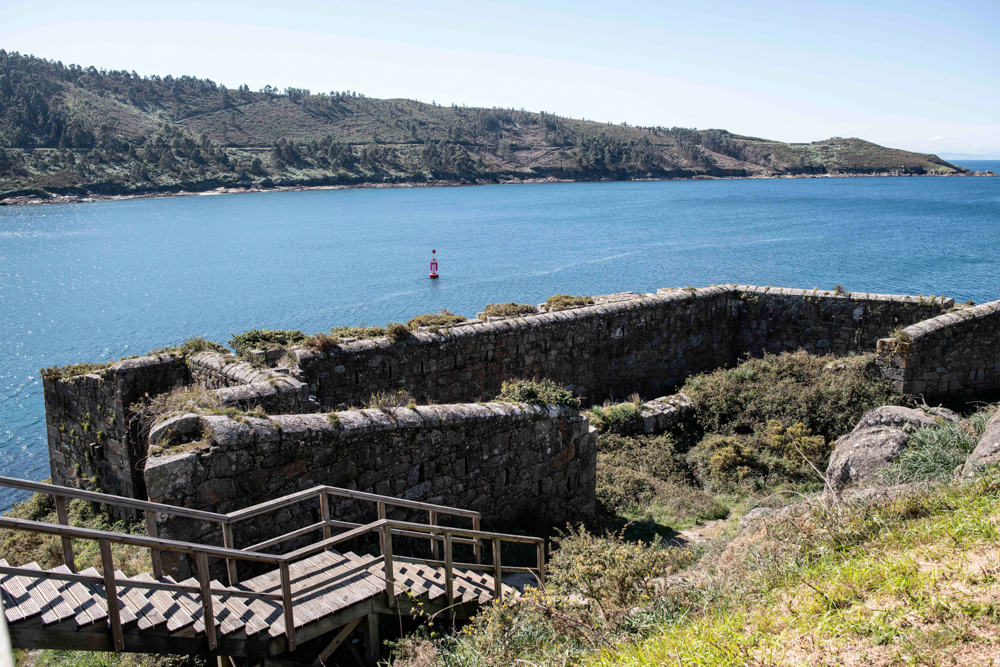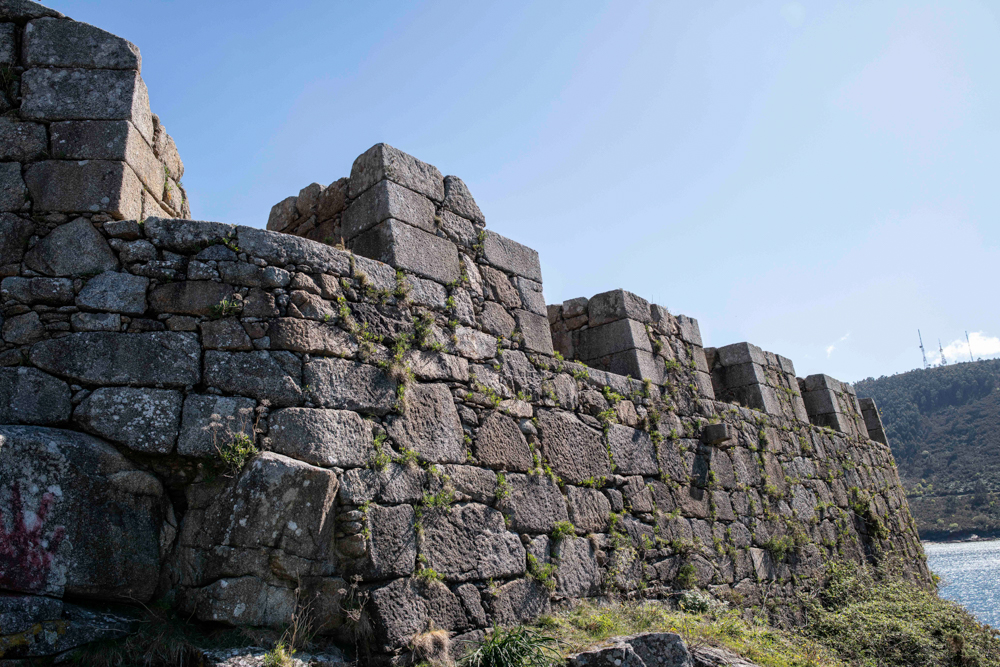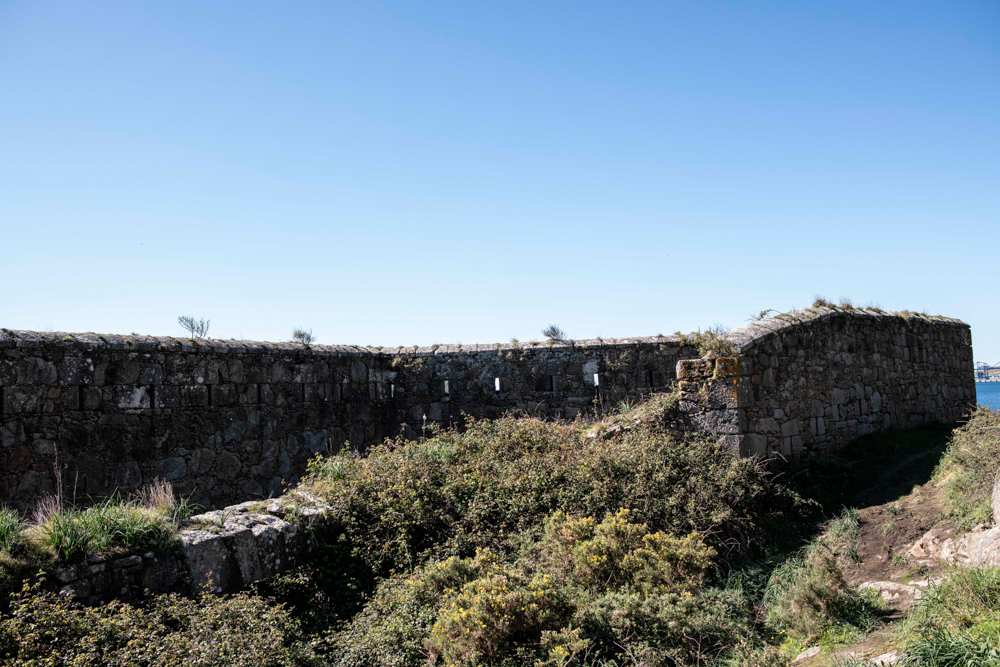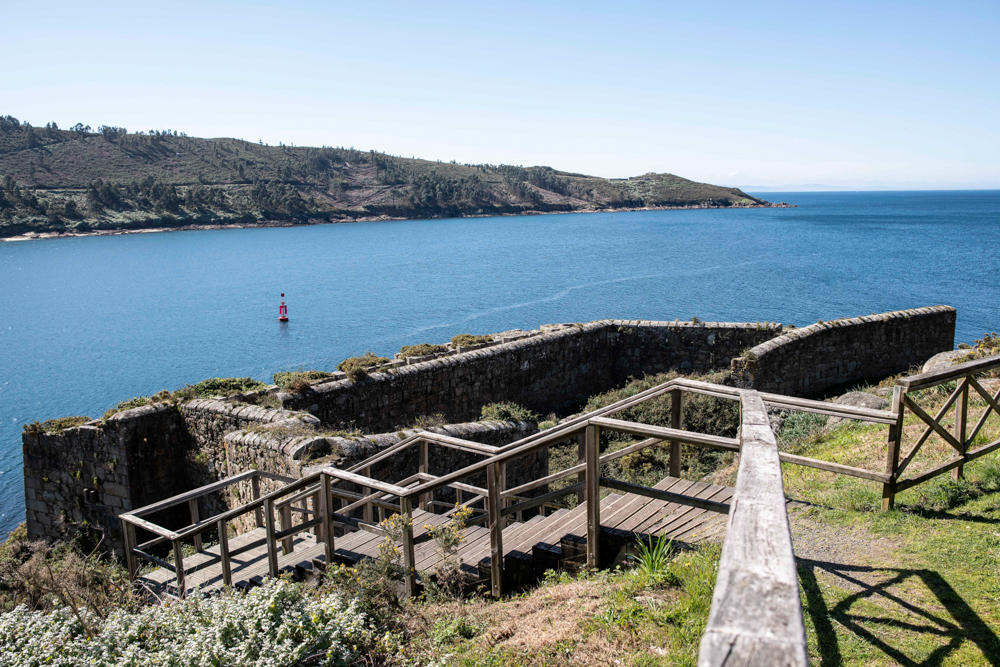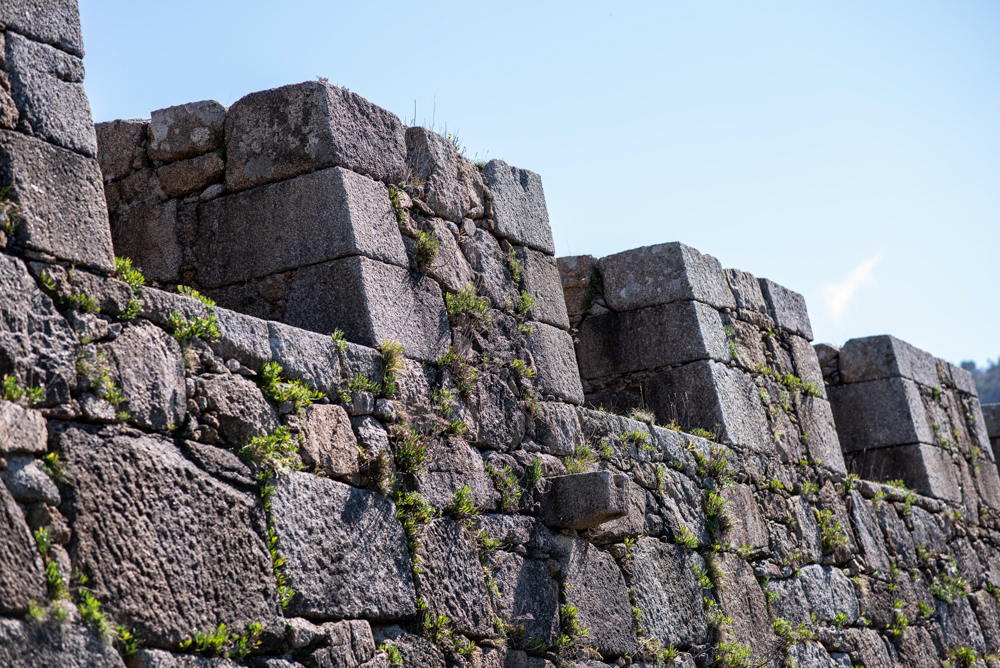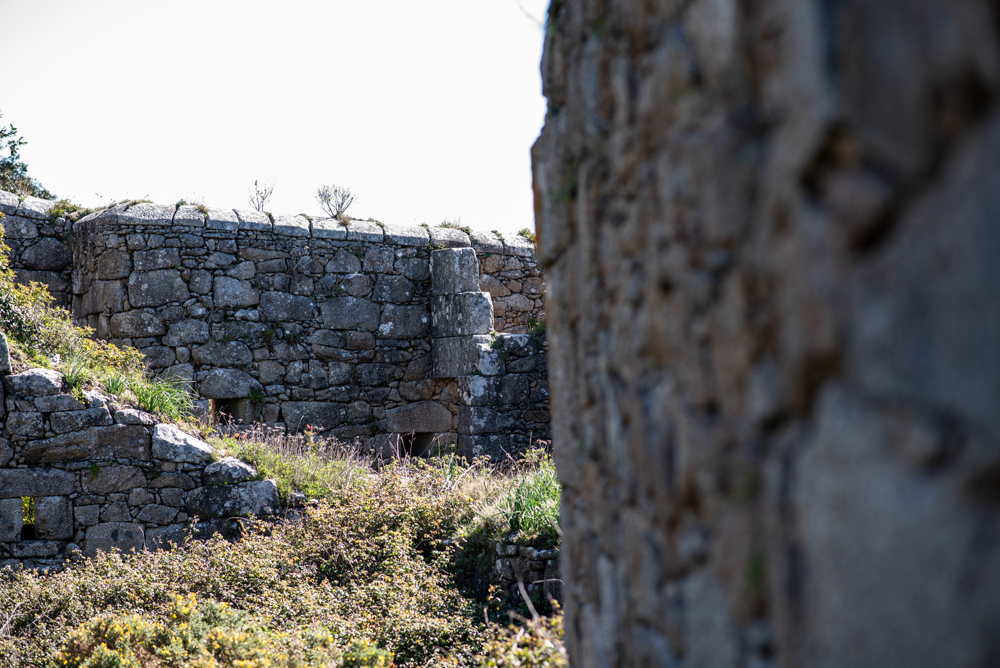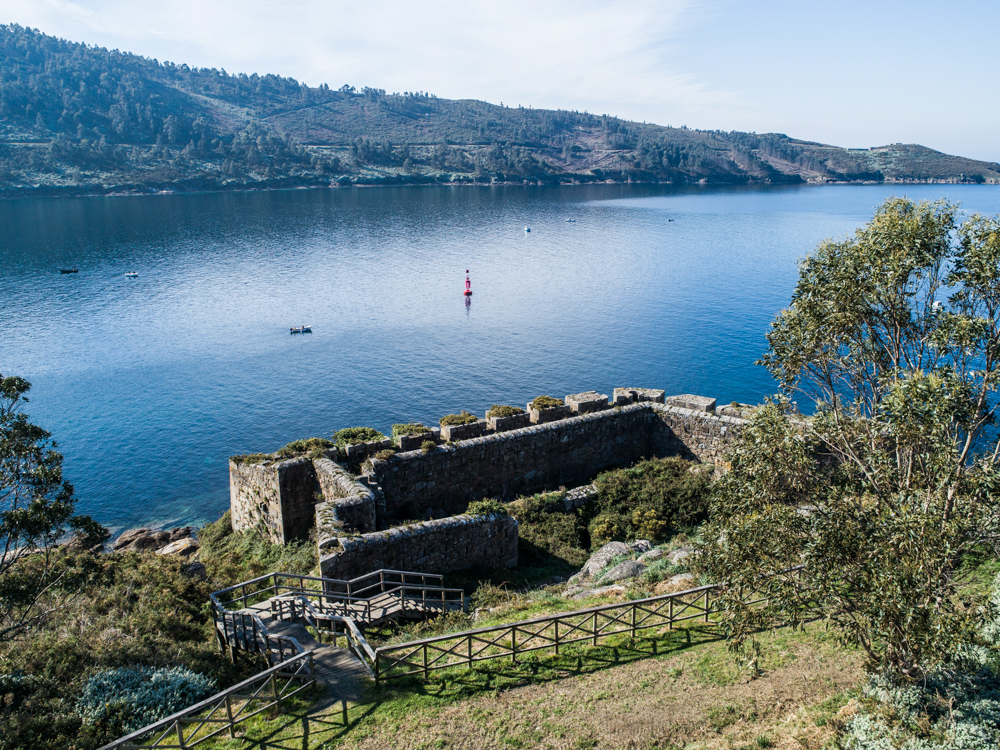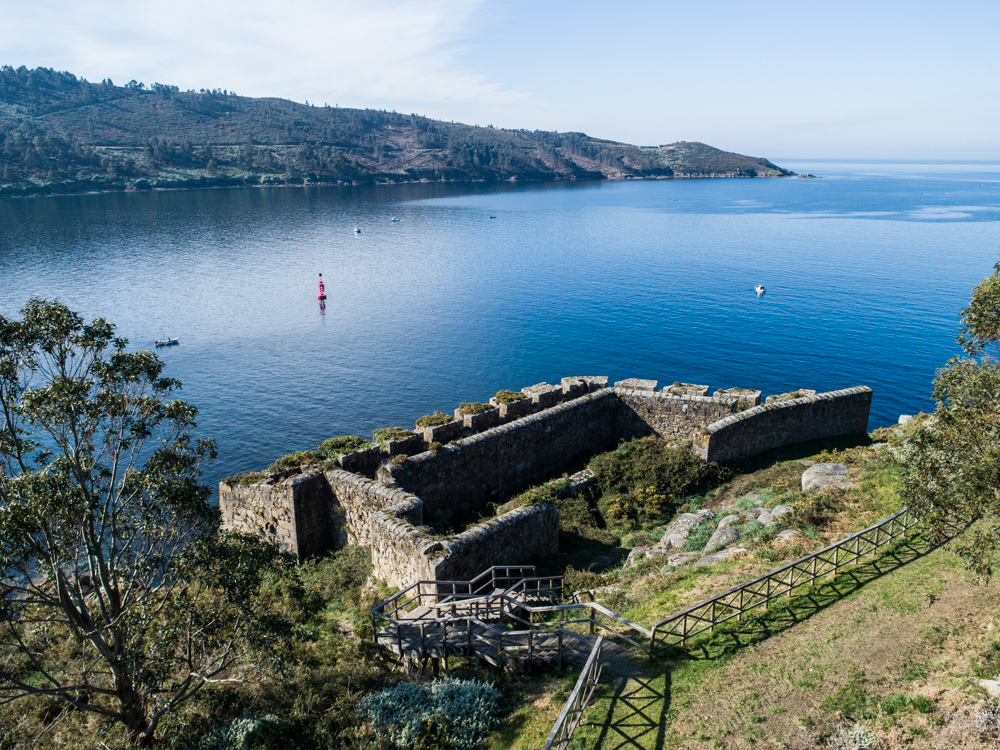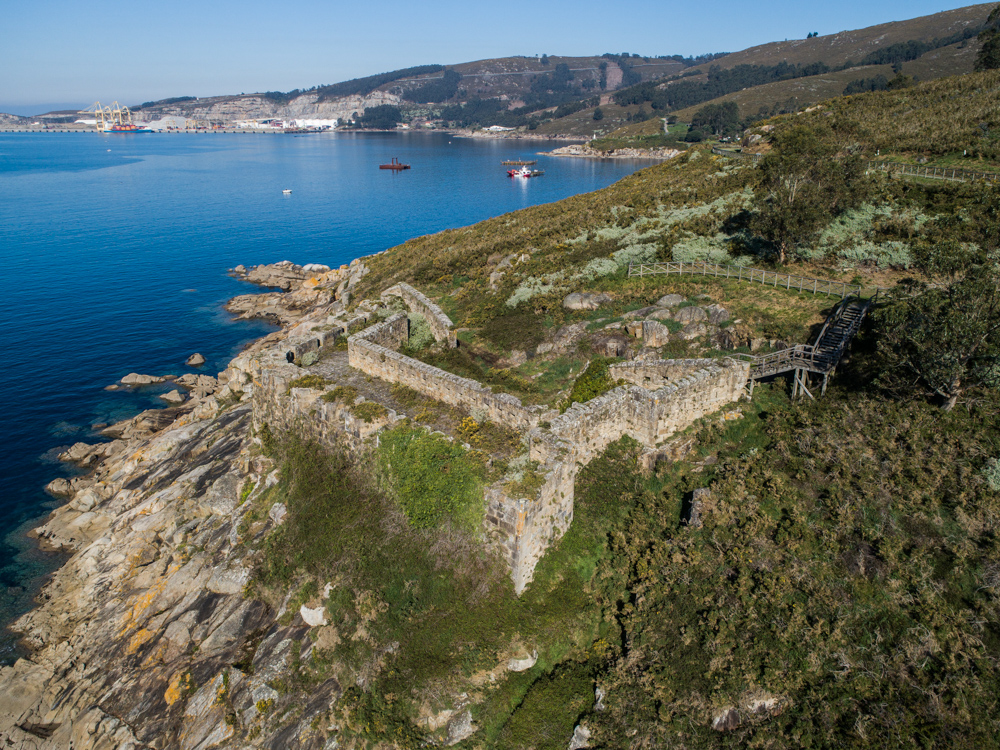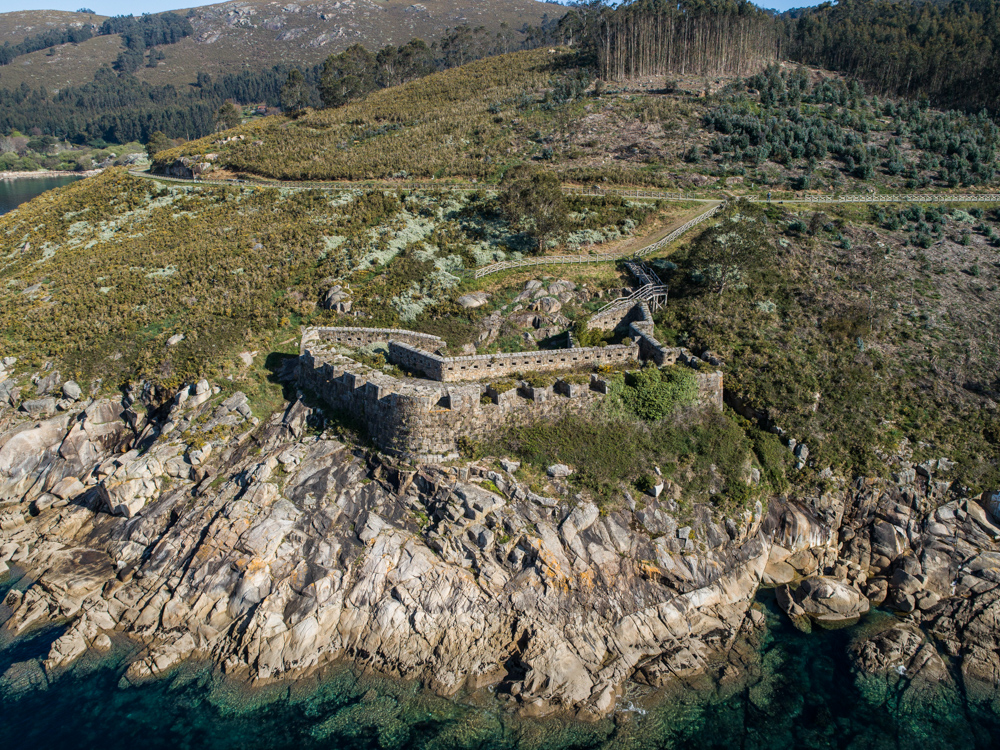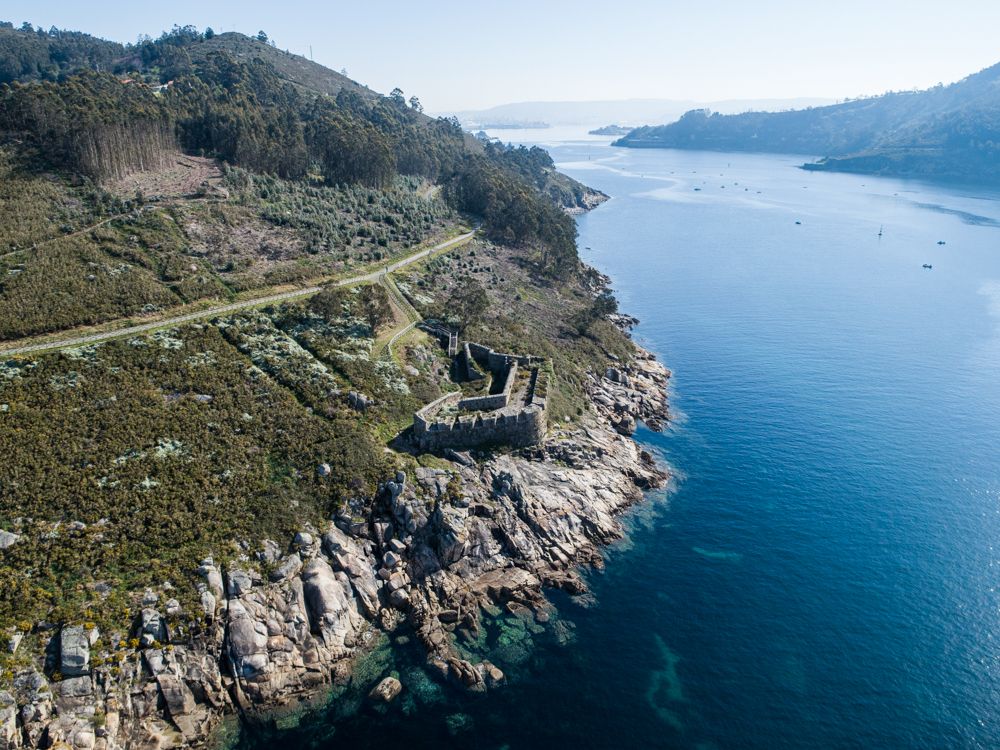Temáticas científicas
¿Por qué es interesante este Punto de Interés?
This battery was built between 1731 and 1739 in a strategic point due to its proximity to the castle of San Felipe and because the ledge on which it stands, called Rabo de Porca, is the last step before entering the narrow waist of the estuary. But its defensive function was not limited to the sea, but also had to watch the attacks by land. Its structure follows the guidelines of a bastioned coastal battery.
The main bastion, which faces the sea, has embrasures for 12 guns, whose projectiles could reach 1,500 meters of distance when fired. Although the battery is built in masonry, ashlars were used in the gunboats, stones that have been carved and give the fort a more careful appearance. The inner face of the estuary hides under the wall the rooms for soldiers and officers, always separated. There is also the powder magazine, where its bomb-proof vaulted ceiling and double protection wall stand out, as specified in the Vauban model for these warehouses. On the land line, where the access door opens, the triangular bastions form a crenellated hornabeque: thirty-three openings allowed the soldiers to shoot with protection. Around the whole complex a moat was dug that was left unnatural, dry and without constructive reinforcement, which still resists today.
Its neoclassical style corresponds to the hand of the popular engineers Juan de Ferriere and Juan Vergel, who also intervened in the reforms of the castle of San Felipe. Its conservation is, along with that of Punta de Viñas, the best of this group.
Imágenes
Vídeos
Audioguía
Información al viajero
 Casas Rurales
Casas Rurales Restaurantes
Restaurantes
 APP de rutas
APP de rutas Punto de información general a visitantes
Punto de información general a visitantes Itinerarios científicos
Itinerarios científicos Guías y catálogos
Guías y catálogos Sinaléctica
Sinaléctica
 Público general
Público general Grupos organizados
Grupos organizados Centros educativos
Centros educativos Investigadores científicos
Investigadores científicos
 Coche
Coche
 Fotografía científica
Fotografía científica Avistamiento de cetáceos
Avistamiento de cetáceos Avistamiento de aves
Avistamiento de aves Observación de estrellas
Observación de estrellas Rutas etnográficas
Rutas etnográficas
Para saber más
During the hectic 18th century, with multiple international and internal war conflicts, such as the War of Succession, it became clear that the Ferrol estuary needed greater protection than that offered by the castles of San Felipe, La Palma and San Martín.
The Cariño cove, at the mouth of the estuary, is presented as a strategic point. In this bay the boats had to wait for the favorable wind to inflate their sails to be able to face the corridor of water that flows into the bottom of the estuary. The cove was therefore an obligatory stop for any ship, including enemies, that wanted to enter the Ferrol port. The defense strategy would be simple with a good set of guns on one side and the other of the estuary. Thus between 1739 and 1770, a series of collateral batteries were projected. On the north face of the estuary were those of San Carlos, San Cristovo, Cariño and Punta de Viñas. All of them today protected under the declaration of Asset of Cultural Interest.
Bibliografía asociada
- - Guía de Baterías de Costa, José Manuel López Hermida y José Manuel Yáñez Rodríguez. Diputación de A Coruña.
- - Página web del Observatorio del Patrimonio Histórico Español: https://www.ugr.es
- - Revista de Historia Militar, 126 (2019), pp. 62-90. ISSN: 0482-5748.
- - Revista Cultural Columba, 17 (2017), pp 58-76. ISSN: 2444-930X
- - Revista Castillos de España, 160 (2010), pp 43-55.
- - Arquitectura y urbanismo en El Ferrol del siglo XVIII, Alfredo Vigo Trasancos y Xosé M. Gómez Vilasó. Santiago de Compostela: C. O. A. G., 1984. ISBN 84-85665-11-2



 Historia
Historia
 Medio Marino
Medio Marino
 Arquitectura
Arquitectura
 Ingeniería
Ingeniería
